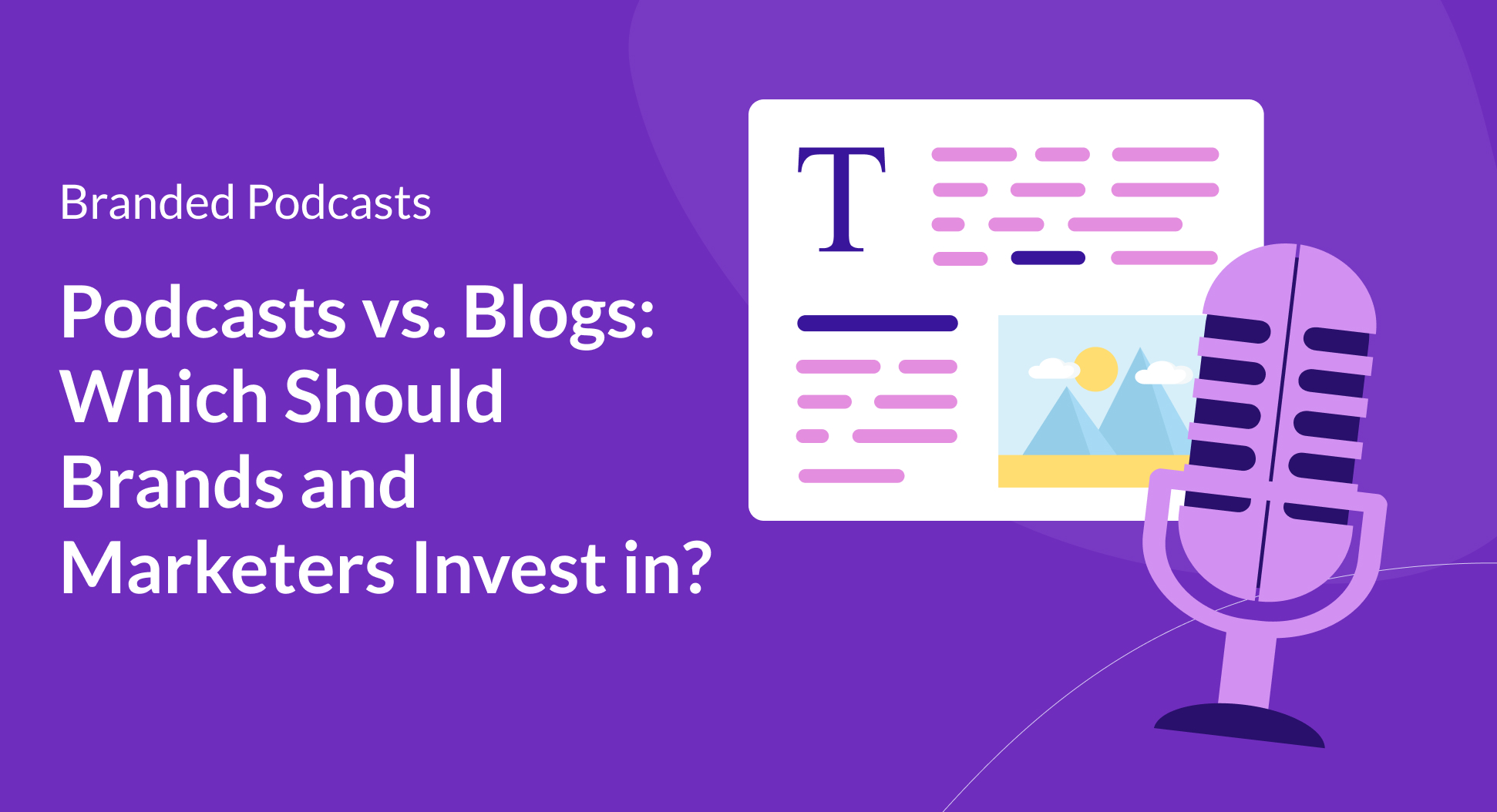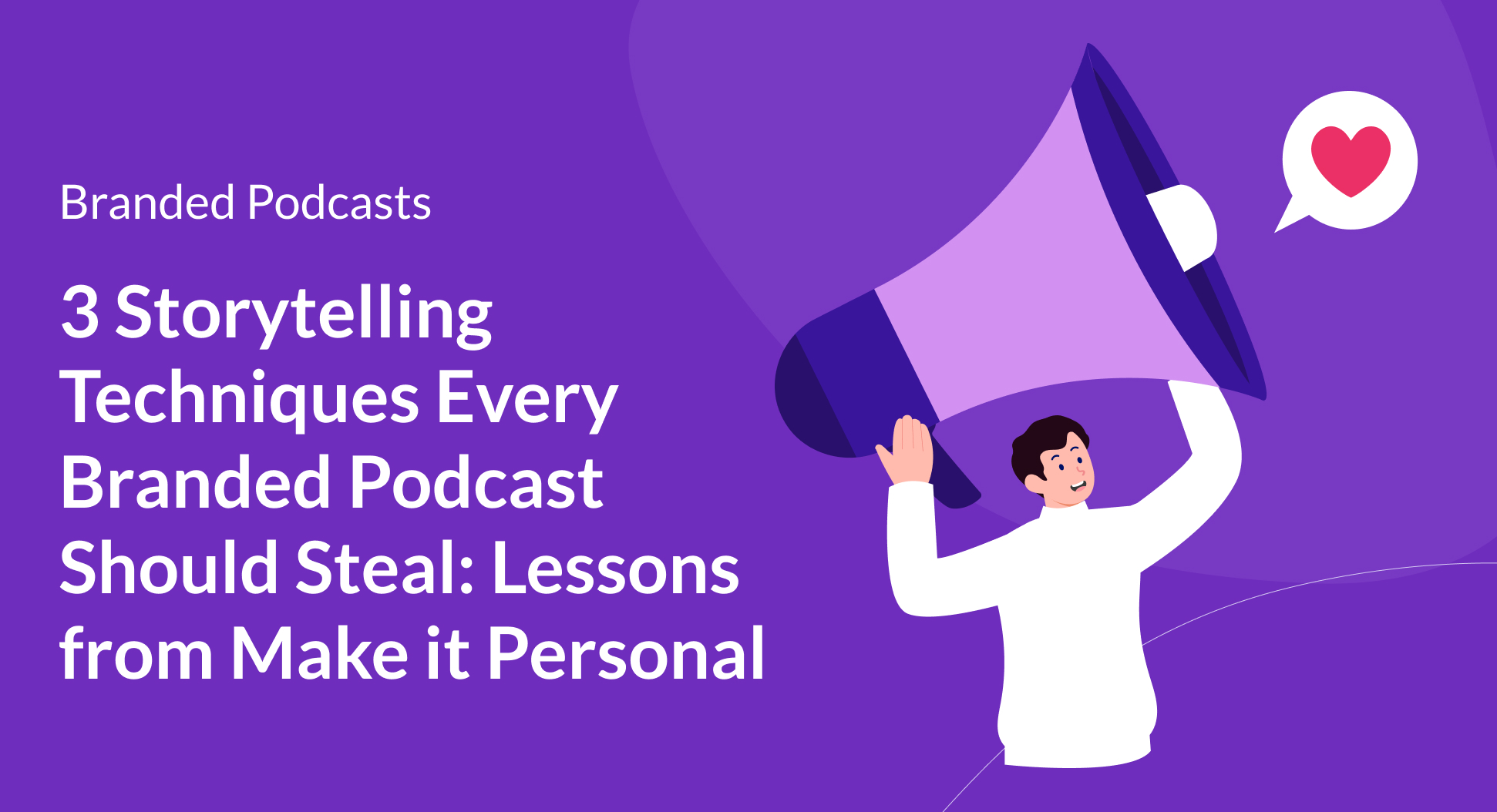Contents
Podcasting is becoming increasingly popular, and as a marketer, it’s important for you to do everything in your power to track your podcasts’ success. The best way to do this is through key performance indicators (KPIs).
Whether you’re just starting out or have multiple seasons under your belt – setting your show’s KPIs is critical for measuring performance and should be prioritized. KPIs can help you understand your target audience, inform changes you want to make to your content, and focus your energy to create the best show possible.
We’ve narrowed down our top 6 picks for the KPIs your brand should be tracking in order to keep growing and improving your show.
Let’s jump in!
1. Subscribers and Downloads
Your subscriber and download count are metrics that may seem similar at first glance but often point to very different things.
Your subscriber numbers can give you a good sense of how well your podcast is motivating listeners to subscribe. When you analyze subscriber numbers it gives you insight into how many new listeners have come your way from your latest marketing efforts, versus how many subscribers have been loyal fans from your early days. It’s also one of the primary ways to measure your audience growth.
Downloads vs. Subscribers
Downloads are different from subscriber counts but are an equally important metric. For example, you can download an episode of a show but not be a subscriber (the reverse is also true- you could be a subscriber but not have downloaded an episode!). Downloads can give you insight into which topics, titles, and guests are resonating with audiences – many of whom may be randomly stumbling upon your show.
Your subscribers and downloads should be measured over the long term, not in short bursts, because you want to see patterns over time. Most podcast listening platforms will provide subscriber and download data, the complexities of the data will be dependent on the listening platform.
2. Unique Listeners
Unique listeners are the number of individual people or devices that have played one of your episodes. This number paints an accurate picture of how many different people are listening to your podcast.
This metric, while similar, is different from your total listens (downloads) number. Total listens gives you a sense of how many times the play button is pressed, including multiple plays on one device (i.e. if someone is re-listening to the same episode).
While both are important, the unique listeners metric gives you a more accurate sense of how broad your show’s reach is. All streaming platforms will share this metric so you can measure and improve it over time.
3. Social Media Shares
Each podcast episode you produce can be shared directly to social media from the streaming platform your listeners are using. Social sharing metrics are an invaluable KPI because they measure the effectiveness of your show and your listeners’ willingness to engage with it. Remember, people only share content that they are proud to be associated with or that really moved them, and they feel is a value-add for their community to know about.
Social sharing is not just a way to grow your audience, but it also gives you the opportunity to connect with your listeners on different platforms – whether it is Facebook, Instagram, Reddit, Twitter, or LinkedIn.
Quick Tip: Social sharing should be tracked over the long term, so you can get a sense of your audience’s trust in your brand, topics/guests they are interested in, and which platforms they are most likely to engage on.
4. Rankings and Reviews
Rankings and reviews are the digital version of a friend recommending you listen to a podcast they think you’d enjoy.
When a listener leaves a ranking or review of your podcast, that means they had a strong emotional reaction to the content because it compelled them to move to action.
Positive reviews are a magnet for new listeners. Over time, strong rankings and reviews will boost your credibility with other potential listeners and increase your exposure on your podcast platforms, they act as trust signals for new audiences. Closely watching rankings and reviews allows you the opportunity to understand what is resonating and what needs to change about your show.
Quick Tip: If you’re struggling to get your audience to leave ratings and reviews, include a call to action at the beginning of each episode encouraging them to do so!
5. Average Consumption Rate
Consumption rate is a metric that measures the percentage of an episode that your listeners are tuning in for. This is an important metric to track because it indicates whether or not your listeners are engaged with your podcast and interested in the episode from start to finish.
A low consumption rate will also tell you where there is room for improvement – whether it’s the topic and themes, where ad placements are, transitions, choice of music, or audio quality. You can then look at a specific episode to see where your listeners are giving up and improve that part of your podcast.
You can also use consumption rates to measure what aspects of your content resonates with your audience. If listeners drop off at the same point every episode, this is an indication that you need to make some changes.
6. Episode-by-Episode Metrics
Analyzing your numbers from one episode to the next helps you better understand the value of your podcast over time. By taking a look at your top-performing topics and titles, average listen times per episode, and listener geography and demographic by episode, you can gain a real sense of how your podcast has improved over time and the extent of your audience base.
Some of the more popular podcast listening platforms like Apple Podcasts and Google Podcasts will show you important episode metrics like unique devices per episode and “meaningful” plays per episode. If you have access to this data, it’s important to dive in.
As you can see, there is a wide range of important analytics at your disposal to help understand your listeners and improve your podcasts’ success. Each of the six KPIs outlined above offers a glimpse into how your podcast is doing and what content performs well with your audience.
Use them to identify your strengths and weaknesses and make the necessary improvements.

.avif)
.avif)



.png)

.png)




.png)
.png)
.png)
.png)